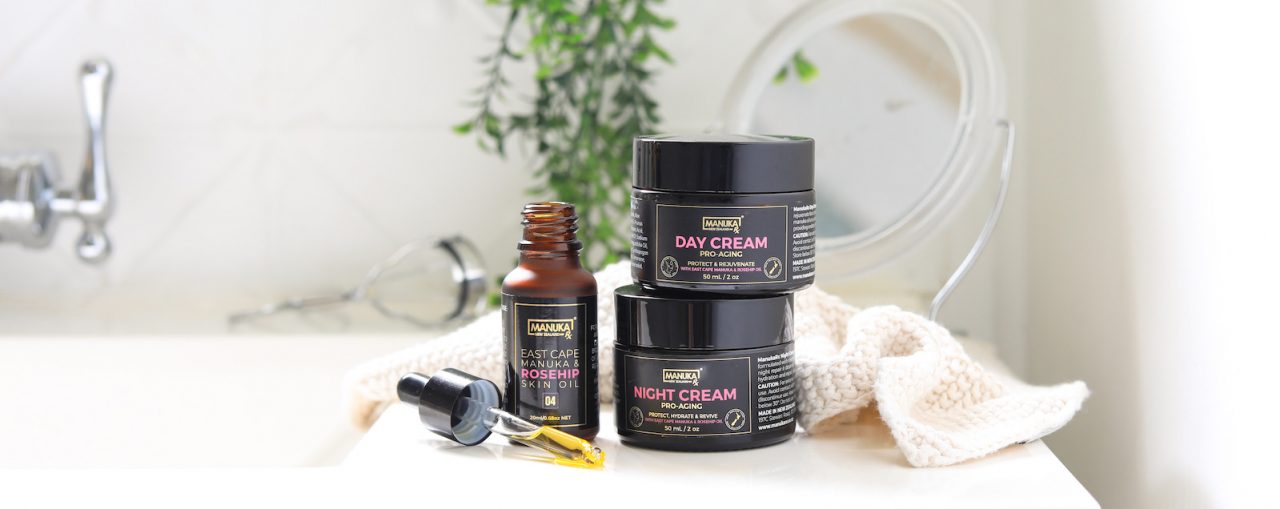
Issue 21.8, East Cape North Island, New Zealand, 31 August 2021
We source deals for Obris members from across the planet. Our portfolio demonstrates considerable diversity of locations as well as industries.
Quite often we invest in asymmetrical opportunities close to home. New Zealand has a thriving business climate ranging from start-ups to well established companies.
Most of us know that New Zealand is known for its exports of animal products including meats, milks and wool, its lucrative tourism industry and of course Hobbits (filming industry).
Do you know about Manuka Oil?
Beginning in 2017, we invested in a company that was largely a Manuka marketing and packaging company with very high ambitions.
Fast forward four brief years, and Manuka Bioscience is exerting its dominance in the expanding industry. Their model has been to acquire the complete supply chain from growing plantations to exporting finished products.
My business partner, Marvin Yee, who introduced us to Manuka in 2017 recently traveled to the East Cape of New Zealand’s north island to visit Manuka Bioscience’s plantations and production facilities.
Marvin returned to Auckland energized by what he learned and experienced, sufficiently so that we are eager to share his tour with you.
In this edition of the Global Investor we will tell you about Manuka and the market. In the next edition, we will tell you how we have structured our investment in this up and coming industry to maximize returns for our members.
If this is the first time you are hearing about Manuka, I will assure you that it is a legitimate industry with a wide variety of applications. You will most often find Manuka oil in skin care products. Manuka Honey is marketed around the world. As an example, Amazon lists 569 different Manuka products on their US site.
Unlike the goji berry and other “hot” marketed products that have come and gone, Manuka has been around for centuries and is here to stay.

What Exactly is Manuka?
The Maori of New Zealand have extracted oils from the Manuka plant for medicinal purposes for centuries.
Through contemporary scientific research, we now know that Manuka oil contains Manuka Beta-Trekitones (MβTK™), which are a range of naturally occurring organic compounds.
MβTK’s contain significant antibacterial, anti-parasitic and anti-inflammatory properties. Manuka Oil is up to 33 times more potent against some bacteria than Australian Tea Tree oil.
Applications today include topical preparation for abrasions, skin diseases and wounds. It is used to treat colds and fevers, and to combat skin irritations and infections. At a most general level, Manuka oil is increasingly used to promote comprehensive immune health.
Manuka honey is made by bees that pollinate the Manuka flower. Manuka honey contains methylglyoxol, a chemical compound that also has established antibacterial properties.
The Market for Manuka
According to a MarketWatch report produced in June, the Global Manuka Honey market is expected to nearly double from USD $394M today to $753M in 2027 with a compounded annual growth rate of 11.4%. The US is the largest export market for Manuka honey, though demand in China is growing rapidly.
The global Manuka Oil market is expected to grow exponentially. While the sale of cosmetics, hair care and skin care products infused with Manuka oil offers consistent growth and expansion globally, it’s medicinal characteristics will take the sale of Manuka oil to the moon. A growing number of recent clinical study reports attest to this breakthrough.
The Product & Process
Nearly 80 percent of New Zealand’s Manuka oil is produced from plants in the East Cape Region on the North Island, and most often in extremely remote areas.
Subsequently, most processing facilities are within a short drive of the plantations.
After four years of active involvement in Manuka Biosciences, the timing was perfect to see production and processing first-hand. Marvin headed out early one crisp August winter morning.
His day began with a Chathams Air flight from Auckland to Whakatane. This small town 293 kilometers from Auckland is where New Zealand Manuka, now a part of Manuka Bioscience, is headquartered. It is also the closest town and commercial airport to where Manuka Biosciences has their Manuka plantations.

NZ Manuka has a number of plantations in the region and the closest processing facility is in Opotiki which is about an hour’s drive from the regional airport.
According to Marvin, “I was very surprised at the scale of the operation as we toured the plantations and production facilities. The people were professional with high attention to detail, especially in regards to safety.”

The Manuka Plant growing on a New Zealand Manuka plantation


The Manuka leaves are harvested. This is the raw product.
The leaves are then cooked in high pressure “cookers” to extract the oil.

We also have another regional processing facility here for the manuka oils.
This is more open air and harvesting is more manual as the terrain is more hilly.

|
And these are the oils that are extracted to produce the Manuka oil.
|

Marvin was impressed with the size of operation the company has now grown into. We first invested in a Manuka marketing company that had high ambitions.
We saw the potential, based on the model that was presented to us, the quality of management that would grow the model into a Manuka powerhouse, and what we knew to be significant market potential well beyond New Zealand.
On a corporate level, the company has conducted two major acquisitions of Manuka Therapeutics and New Zealand Manuka. It now has a valuation of $24m which will go to $30M after a new strategic investor invests a further $6M in the coming months.
We are pleased with the results so far.
In the next issue of the Global Investor, we will explain to you how we have structured investment in Manuka Bioscience for Obris members to glean from this established and growing market disruptor.
Stay tuned.
Sincerely,
James on behalf of the Obris Team

